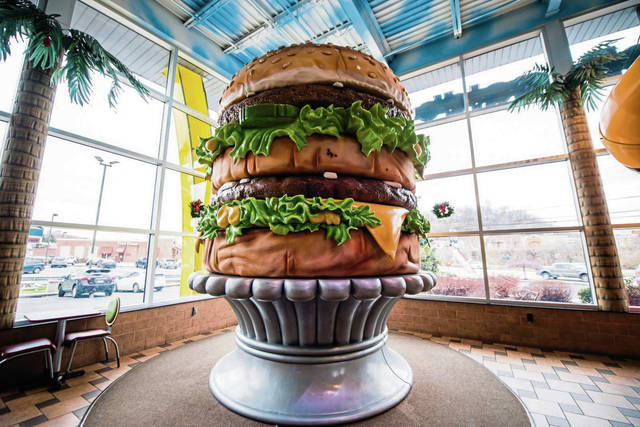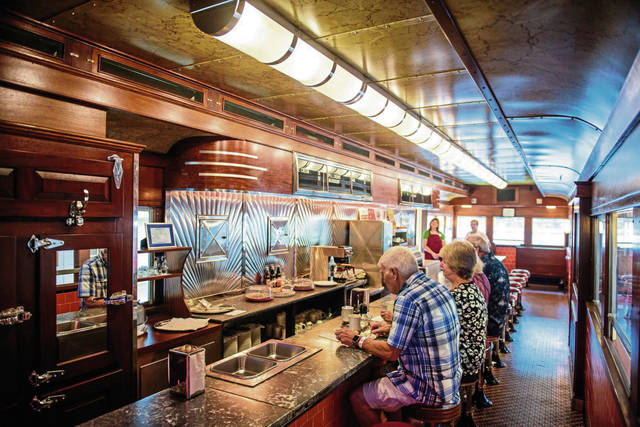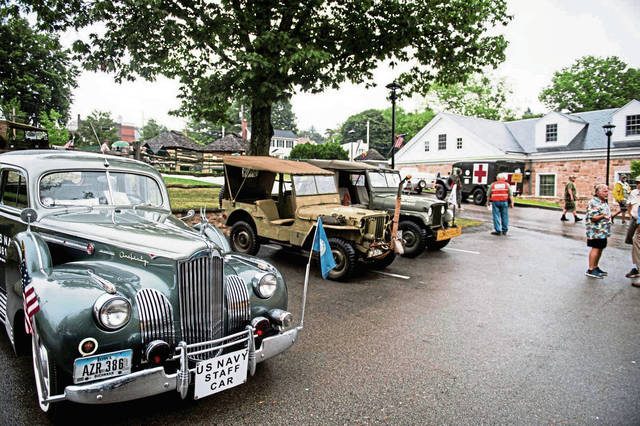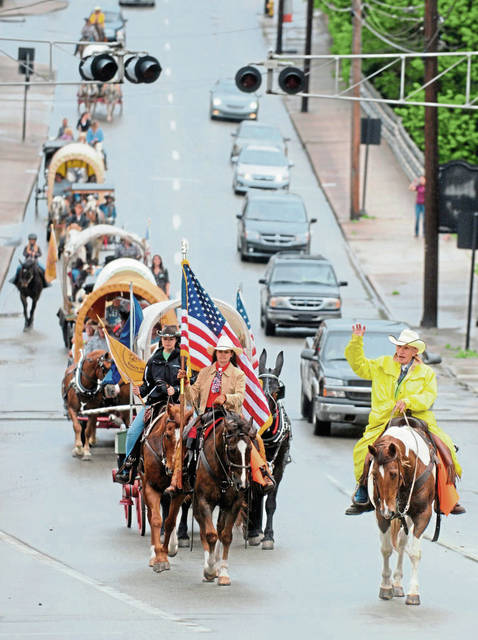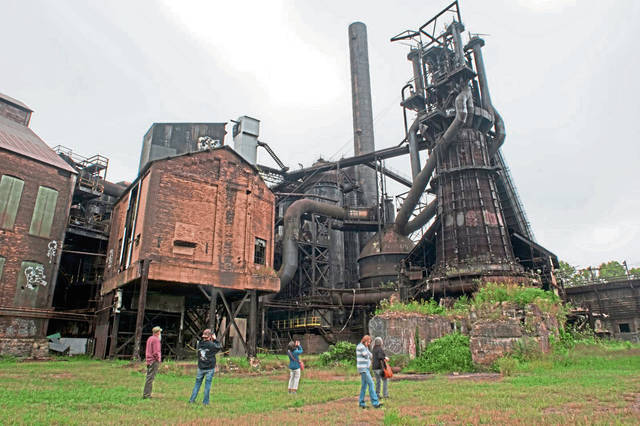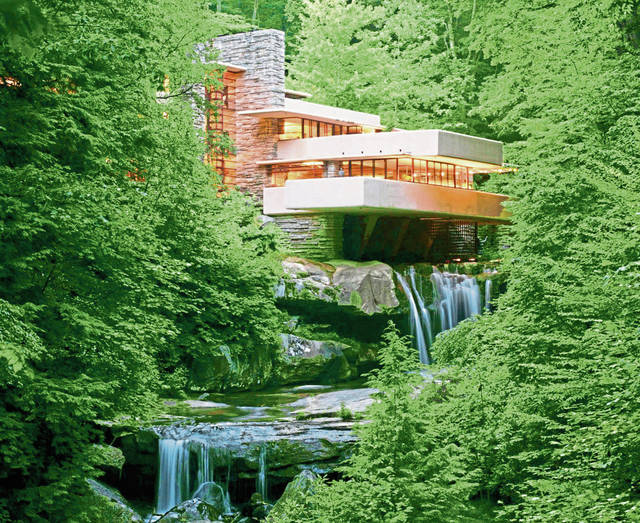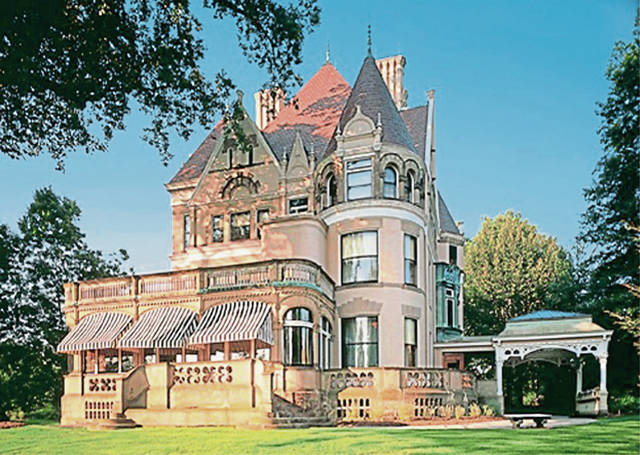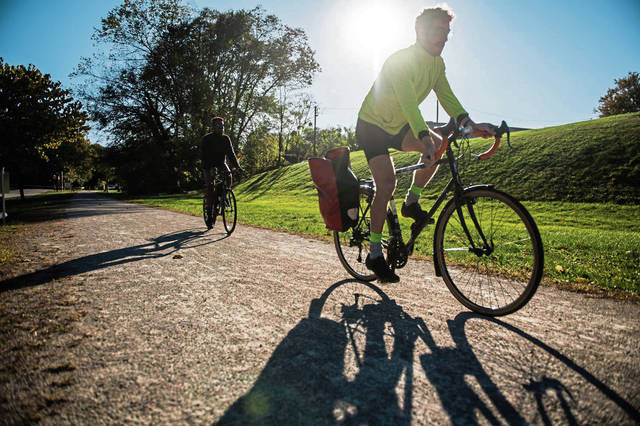30 years in: Pennsylvania's heritage areas boost tourism, local economies
Over the past three decades, the Pennsylvania Heritage Area Program has grown to cover every corner of the state — and nearly all of the middle, too. It has also matured to pump billions of tourist dollars into local economies each year.
Launched in 1989 after a decade of planning, the program now includes 12 sectors that span 57 of 67 counties, crossing boundaries to connect places that share common themes in Pennsylvania’s continuing story.
All of Southwestern Pennsylvania is covered by at least one of four heritage areas: Allegheny Ridge, Lincoln Highway, National Road and, the largest, Rivers of Steel. Only the National Road corridor does not encompass at least parts of Allegheny and Westmoreland counties.
Treasured places such as Frank Lloyd Wright’s Fallingwater and Bedford’s coffee pot-shaped building are part of the regional heritage mix. Other pieces of the past have taken on a new life, like the former Carrie Blast Furnaces in Rankin.
The towering remnant of Pittsburgh’s once-dominant heavy industry attracts those who want to discover or revisit the spot where iron was produced to fuel steel production at the Homestead Works. Others have found inspiration there for artistic endeavors and movie shoots.
“It was started purely for historic preservation and managing projects, and it’s grown into something that has become an integral part of Pennsylvania’s tourism industry,” Elissa Garofalo said of the heritage areas.
As the program has evolved, most heritage areas have undertaken major efforts such as developing recreational trails, operating museums or offering field trips to historic sites, said Garofalo, executive director of the Delaware & Lehigh National Heritage Corridor and president of Heritage PA, a group that represents the state’s dozen heritage areas.
“We have such a tremendous collection of historic sites in the state,” she said.
Leveraging heritage
Tourists spend an estimated 7.5 million days and nights total in Pennsylvania’s heritage areas each year, buying more than $2 billion worth of goods and services. About 70% of that spending occurs at heritage-related attractions, according to a 2016 report from the Center for Rural Pennsylvania.
Those figures were based on 2014 data — something tourism officials agree needs to be updated to show continued growth.
Yet even five years ago, the resulting contribution to the state economy was 25,708 jobs and about $800 million in labor income, the study indicated.
The Rivers of Steel National Heritage Area includes eight counties: Allegheny, Armstrong, Beaver, Butler, Fayette, Greene, Washington and Westmoreland. It traces the area’s transformation from colonial frontier to industrial heartland and beyond.
A new economic impact study for the area will be released in February, eight years after its last one.
That old study indicated the Rivers of Steel region had attracted nearly 408,000 visitors over three years, resulting annually in about 878 jobs and an economic benefit of just under $67 million.
Much has changed since then that has helped to grow regional heritage tourism even more, according to Augie Carlino, Rivers of Steel president and CEO.
“In 2012, we were just barely getting into the Carrie Furnaces to begin stabilization and tours,” he said. “Now, we’re approaching close to 50,000 people going to that site.”
Rivers of Steel also has taken on operation of the Explorer riverboat, which offers educational sightseeing tours when it isn’t docked next to the Carnegie Science Center on Pittsburgh’s North Shore.
A tour of central Rivers of Steel sites — including those associated with the 1892 Homestead lockout and strike at the Carnegie Steel Co. — can prompt visitors to explore other related attractions, such as steel industry exhibits at Pittsburgh’s Senator John Heinz History Center and Clayton, the Point Breeze mansion of industrialist Henry Clay Frick.
Through a project dubbed the Mon Valley Creative Corridor, Rivers of Steel is working to boost revitalization of former industrial communities such as Monessen, Charleroi, Homestead and Braddock.
The initiative features partnerships with community organizations and foundation money to seed heritage-related redevelopment. It has helped artisans such as blacksmiths and glassblowers establish summer pop-up shops in former industrial spaces in the targeted communities. The goal is to establish a permanent presence and attract other start-ups to spur local economic development.
“We’re into a year and a half of what we see as a four-year project to build this out,” Carlino said.
Rivers of Steel also supports the development of regional bike trails, including the 150-mile Great Allegheny Passage that connects Pittsburgh with Cumberland, Md.
Paths of discovery
Paddling down the Juniata, Conemaugh and Kiskiminetas rivers and hiking or biking along such paths as the West Penn and Ghost Town trails are ways visitors can experience parts of another regional recreational route — the Pittsburgh-to-Harrisburg Main Line Canal Greenway that is the current focus of the Allegheny Ridge Heritage Area.
“The goal is to create a continuous land trail for hiking and biking, but we’re not there yet,” said Jane Sheffield, executive director of the Altoona-based Allegheny Ridge Corporation that oversees the heritage area. “The plan is to get people safely off major highway systems.”
Over half of the planned Greenway corridor coincides with a portion of the proposed September 11th National Memorial Trail that would connect the National September 11 Memorial and Museum in New York, the National 9/11 Pentagon Memorial in Arlington, Va., and the Flight 93 National Memorial near Shanksville, Somerset County.
The freedom of a road trip, and the thrill of discovering hidden delights along the way, are among the appeals shared by the Lincoln Highway and National Road heritage corridors.
The Lincoln Highway Heritage Corridor extends 200 miles from Westmoreland County east to Adams County, following a portion of one of America’s first transcontinental roads. The National Road Heritage Corridor, an area that covers a 90-mile footprint, straddles the historic National Road through Washington, Fayette and Somerset counties.
The National Road corridor, also designated as a National Scenic Byway, includes the natural settings of Ohiopyle State Park and Laurel Caverns as well as the historic Searights Tollhouse and Museum, near Uniontown, and Washington’s David Bradford House, home of a leader of the 1790s Whiskey Rebellion.
Designated in 1995, the Lincoln Highway corridor is based at the Lincoln Highway Experience museum in Westmoreland’s Unity Township. The corridor is home to reconstructed 18th-century forts in Ligonier and Bedford, scenic parks on Laurel Mountain and, farther east, the “Old Jail and Museum,” which dates from 1818 and is one of the few structures in Chambersburg to have survived when Confederate forces torched the town in 1864 during the Civil War.
The Unity museum has expanded to house a restored tourist cabin and roadside diner, where visitors can end a tour with coffee and pie. Still, the highway experience can’t be limited to a single site, corridor Executive Director Olga Herbert noted.
“We developed our 200-mile Lincoln Highway Roadside Museum, a combination of a dozen murals, 65 interpretive exhibits, painted gas pump replicas and a handful of ‘Picture Yourself’ exhibits,” she said. “We worked quietly along the six-county corridor for a dozen years leading up to its launch, all the while thinking it was a very visual and cool project that our corridor communities embraced.”
Building on history
National and trans-Atlantic media coverage has reinforced the roles of the corridor’s two museums in attracting visitors and encouraging them to explore other sites across the six counties. Special events such as the Unity museum’s weekly summer SupperMarkets, offering music and gourmet picnic fare, are an additional draw.
The National Road corridor found success with its own promotions, including sales of its “Grub to Gourmet” cookbook and an annual “Taste of the National Road Strolling Dinner.”
The two historic highway corridors invite tourists to make physical and thematic connections among places of interest, said Stacey Magda, director of tourism development for the Ligonier-based Laurel Highlands Visitors Bureau.
“You can go from a museum to dining to a historic site,” Magda said. “These roadways act as a ribbon as you’re traveling from site to site. You get to learn about the story from stop to stop. It just enhances the experience that much more.”
The corridors also have played parts in larger travel itineraries, Magda noted. A convoy organized by the Military Vehicle Preservation Association passed through Westmoreland County in August as it retraced the cross-country Lincoln Highway route used a century ago to road-test Army vehicles.
In 2018, a group of Model T enthusiasts drove along the National Road as they duplicated the route used 100 years earlier during an excursion by the “Vagabonds,” which included Henry Ford, Thomas Edison, Harvey Firestone and John Burroughs.
“They traveled from the Laurel Highlands area all the way down to West Virginia on that historic route,” Magda said.
State funding for Pennsylvania’s heritage areas has gradually increased from $2.4 million in 2015-16 to almost $3.3 million for 2019-20.
Through an additional mini-grant program, Herbert has shared about $1.7 million with nonprofits and municipalities along the Lincoln Highway corridor since 1996. The matching state grants can be used for tourism-related efforts, except for marketing or paying staff, she said.
Westmoreland County projects that have benefited from the mini-grants include Ligonier Borough’s recent Diamond Park update and acquisition of property at Bushy Run Battlefield in Penn Township.
“That investment along the corridor has helped lift everyone up,” Herbert said. “It makes for a stronger corridor, to keep visitors in the area longer.”
Jeff Himler is a TribLive reporter covering Greater Latrobe, Ligonier Valley, Mt. Pleasant Area and Derry Area school districts and their communities. He also reports on transportation issues. A journalist for more than three decades, he enjoys delving into local history. He can be reached at jhimler@triblive.com.
Remove the ads from your TribLIVE reading experience but still support the journalists who create the content with TribLIVE Ad-Free.

